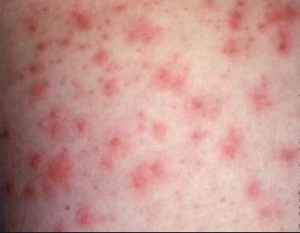Buttock Crack Infection

Yeast infections can appear almost anywhere on the skin where it is warm and moist. In men the warm dark and moist area around the groin is what causes yeast infection on the penis. With women, the warmth and moister in the vagina is what causes the infection.
Infection of the butt crack can be a frustrating, painful, and embarrassing to have. It's a fact that what causes the infection of the butt crack is common although infections generally infect the genital region. The reason why this area is what causes the infection holds true for the same reason other parts of the body causes infection. That is because it is in a warm moist portion of the body.
Let's say the environment is what the infection thrive on. The symptoms of yeast infection of the butt are itching, burning, bleeding, and pain while having a bowel movement. The ideal conditions for the bacteria to grow and multiply are moist darkness that this area provides by the anus.
Skin infection between buttocks (symptom description): For a medical symptom description of 'Skin infection between buttocks', the following symptom information may be relevant to the symptoms: Buttock symptoms (type of symptom). Kamedi vumen tekst scenok en. However, note that other causes of the symptom 'Skin infection between buttocks' may be possible.
Since it is in close proximity to the genital region it is possible for it to spread to the anus. If you scratch this area during infection the skin can peel and cause more severe infections.
Treatment of Butt Infections: The methods of treatment for yeast infection in the genital area may be used to treat the anus as well. It must first be understood that these types of infection is caused by the excessive activity of Candida Ablicans in the body. To cure them, the root of the problem must be treated.
Prescription and over-the-counter drugs and creams offer temporary relief of the symptoms but do nothing to treat the cause of the infection or to prevent recurrence. Yeast infection will recur and each time with more severity than the last infection. The fastest, safest, and natural way to treat infections is to follow two steps. First, use natural ingredients from the refrigerator to treat symptoms such as burning, itching and pain. Second is to start an anti-Candida diet.
This will work to control the Candida in your body and get rid of yeast infection for good. Cure Yeast Infection Holistically.
Introduction If you are reading this website, you are probably looking for a better way to treat your pilonidal disease. Please read on Over the past century, many patients with pilonidal disease have received suboptimal care, as many medical practitioners (including surgeons) don’t fully understand the root cause of pilonidal disease and also underestimate its impact on the lives of young patients. Many doctors continue to believe that the cause of pilonidal disease is a congenital cyst (i.e., a cyst present from birth). This is not true.
There is no cyst. Pilonidal disease is simply an infection under the skin between one’s buttock cheeks that typically arises from a trapped hair or fiber. It’s an acquired disease.
It’s challenging to treat because of where it develops, the moist airless environment there, and the repeated pressure of sitting, and motion in the region. Many surgeons choose to treat patients with disfiguring, wide-excisional operations hoping to resect the elusive cyst. The problem is that many of these radical operations: 1) don’t work and lead to a recurrence and, 2) even if they eventually fix the problem, have a long recovery which is often miserable for the patient and his/her caregiver. When these operations fail they often make the problem worse. Moreover, few surgeons want to tackle pilonidal disease. Even fewer care to operate on patients that have failed surgery from other surgeons. Sternberg: premier expert in pilonidal disease As I started my fellowship in 1999, I was one of those physicians who were reluctant to treat a patient with pilonidal disease.
But the turning point came when I expressed this concern to an attending who knew of ‘a better way’ to treat the disease and invited me to join him for cases. From that time, and through visits with John and Tom Bascom, I learned a technique that made sense and worked. Since then, increasingly difficult cases obliged me to innovate variations that have led to my current technique. I now have a better way to cure pilonidal disease: I have extensive experience performing an operation called the Cleft Lift procedure (approximately 1,500 cases since 2002) and perform it regularly, curing almost 100% of patients. So why do I want to operate on patients with difficult pilonidal problems? 1) I truly am gratified when I improve a patient’s quality of life, and 2) the operation that I perform cures almost every patient, even when they’ve failed prior surgical attempts. I am committed to helping cure pilonidal patients of their disease, and, in the long run, wish to change the way other doctors treat patients with pilonidal disease so these patients have access to reliable and appropriate care.